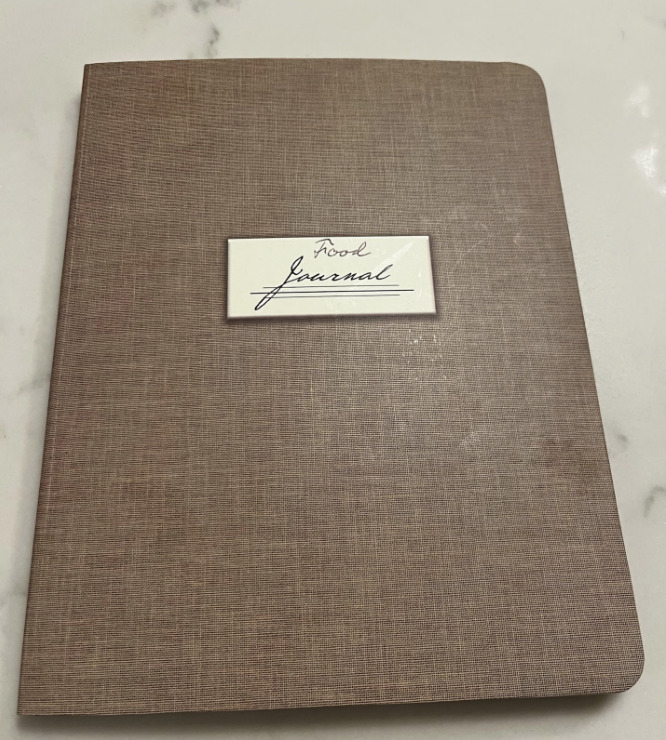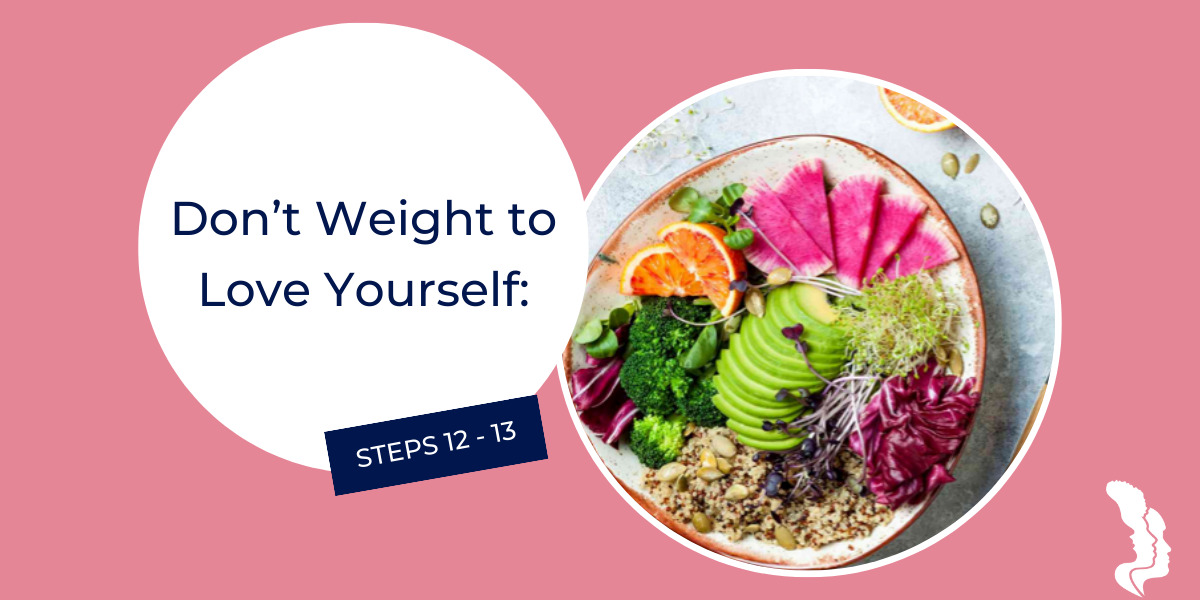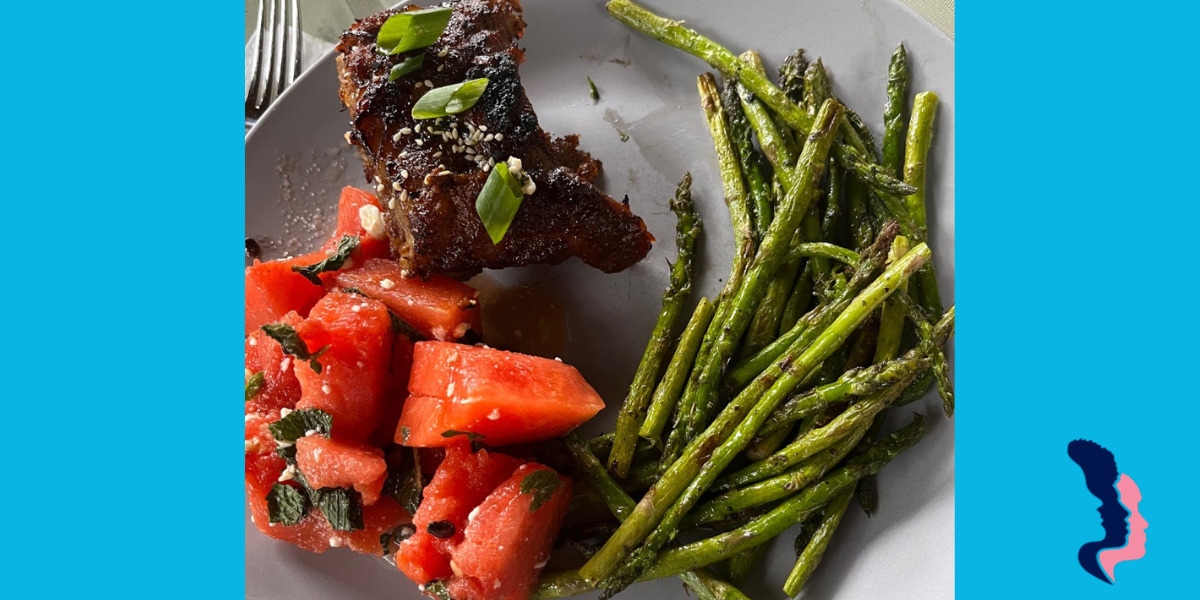Step 1: Keep a Food Journal, write down everything you eat. Step 2: Keep a…

Don’t Weight to Love Yourself: Step 3
Thanks to all those who have commented on “Don’t Weight to Love Yourself,” my blog for 2023. It’s been more difficult to write than I thought and has required more emotional vulnerability than the blogs I wrote in 2021 and 2022, “A Year of Hikes: 52 Weeks, 52 Women, Same Trail” and “A Yummy Year: Cultures, Cooking and Connections” in which I highlighted the stories of other women. I appreciate the encouragement and hope you will continue to share your thoughts.
Step 1: Keep a Food Journal, write down everything you eat.
Step 2: Keep a Food Journal, write down everything you eat before you put it in your mouth.
Step 3: Keep a Food Journal, record where, when, why, and with whom you eat.
In last month’s blog, I stressed that as a 19-year-old, it was important for me to clearly understand what I was eating before attempting to change a single thing. To recap my journey, for the first two weeks of learning to love myself, I didn’t want to limit the snacks that I found to be pleasurable. I granted myself permission to eat whatever I wanted but committed to writing it down in a food journal. That meant I continued to overeat at dinner and eat cookies and other snacks between meals and late at night. During the third and fourth weeks of “learning to love myself as I was”, I granted myself the same permission but promised myself (not anyone else!) that I would write down what I was going to eat, PRIOR to putting it in my mouth. I told no one…it was my secret! I wasn’t looking for external validation.
As I became aware of how much I was eating between meals, I quickly deduced that I wasn’t eating because I was hungry. “If I’m not hungry”, I asked myself, “why am I eating?” At the time, I was taking an Intro to Psychology course at Anne Arundel Community College, which covered in much more depth than my 7th-grade science class, the topics of classical and operant conditioning. I’m not going to explain the difference but suffice it to say, I began to wonder if my eating habits were the result of operant conditioning. Curious by nature, for the next two weeks, I charted not only what I ate, but also where, when, why and with whom I ate.
Here are some of the things that I learned about myself:
1. For me “unhealthy and stealthy” went together! I realized that I ate unhealthy foods quickly and in secret. It was as if I consumed cookies fast enough or if nobody saw me eat them, then the calories wouldn’t count. Less shame but more food.
2. I ate a lot because I didn’t feel I was enough. I was short and heavy and back in the day, I was compared unfavorably to Twiggy, society’s ideal woman at the time.
3. The pantry in our kitchen was a trigger for me. It’s where my mother kept all the snacks and seemed to call me by name when I walked by. Not wanting to be rude, I answered!
4. If I ate unhealthy foods early in the day, I ate even more in the afternoon and evening. I told myself, “You’ve already blown it for the day. The day is ruined.”
5. I ate at night because there would be nobody around to pass judgment or give advice I didn’t want.
6. I ate a lot at mealtime with the hope that I would be so full that I wouldn’t eat later. (That didn’t work!)
7. I considered food to be a reward. If I did well in school, if I played a good basketball game, or if I performed a good deed, I treated myself to a yummy snack.
8. I ate when I felt anxious, especially if it was related to my father’s alcoholism.
9. I ate as a way of coping with my fear of not getting my fair share, and I don’t just mean my fair share of food. One of nine children, my siblings and I vied for attention from our parents, we woke up early to get the best socks out of the “communal sock drawer” and competed for recognition in school, sports, scouting…you name it, we were a competitive bunch!
How did I come to learn these things about myself? It required me to build on the previous step. I permitted, even encouraged, myself to eat whatever I wanted if I first wrote it down. But this next step also required that I record where I ate. Was I at the table? In the kitchen? Hiding behind the pantry door? In the car? At a friend’s house? At work?
I also charted when and why I ate. Tracking when I ate was not so much about tracking the time of day but rather what I was doing or feeling when I ate. I quickly realized that I ate healthfully at mealtimes but overate when I was watching TV when I was reading the newspaper or a good book when I was worrying about my Dad’s drinking or anxious about an exam.
To help chart why I ate, I devised three reasons for eating: 1) Stomach Hunger. 2) Mind Hunger. 3) Mouth Hunger. These reasons are not scientific, and I didn’t learn them in my Intro to Psychology class. I made them up because they were helpful to me and I share them now with the hope that they will be helpful to you. Feel free to totally disregard them but I will do my best to explain them here. If my stomach growled and I experienced an empty feeling, I recorded “Stomach Hunger.” I entered “Mind Hunger” in the journal if an external cue such as the clock or another social construct (work luncheon, bridal shower, birthday party, etc.) designated a specific time to eat. I wrote “Mouth Hunger” in the journal when I wasn’t hungry and it wasn’t mealtime, yet I had an overwhelming urge or craving for a specific type of food.
Lastly, it was incredibly helpful to note with whom I ate. As previously mentioned, I often ate alone and in secret. As an outgoing teenager, I went to lots of parties where there was lots of alcohol. But in the same Psychology class mentioned earlier, I learned that behaviors are both learned and influenced by genetics. I was deathly afraid that one sip of beer or wine would turn me into a raging alcoholic. So, while everyone else drank, I ate…a lot!
Spending six weeks attending to and seeking to understand my relationship with food was a novel experience. Never had I spent so much time focused so acutely on myself. But hey, according to my Mom, I was worth it! After all, she’s the one who said, “Don’t wait to love yourself!” I’m glad I took her advice. I didn’t know it then, but I know now that I was practicing a kind of “mindfulness”, attention to the present moment, which is a wonderful gift of self-love. In two weeks, I’ll share Step 4!



